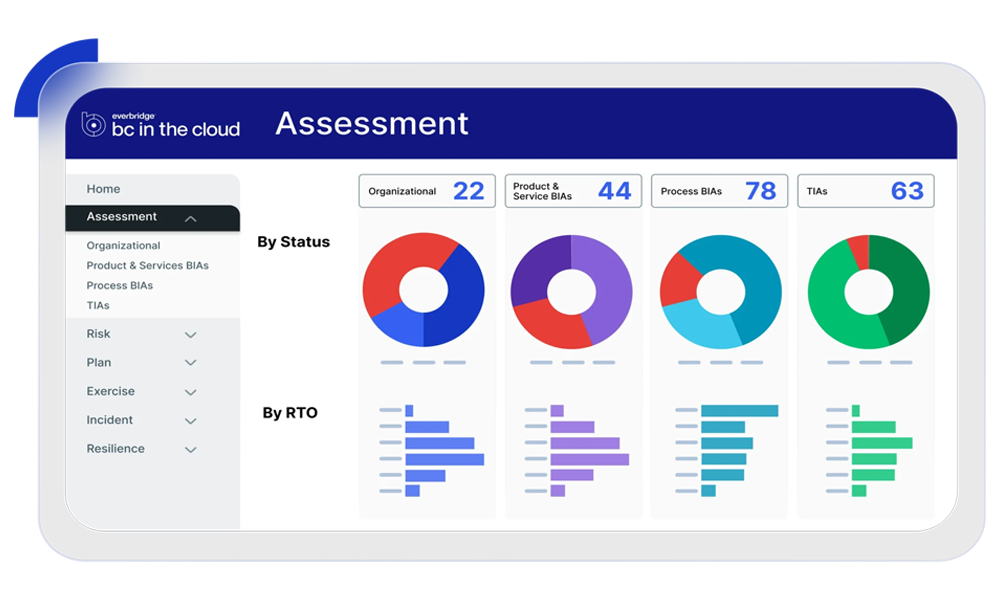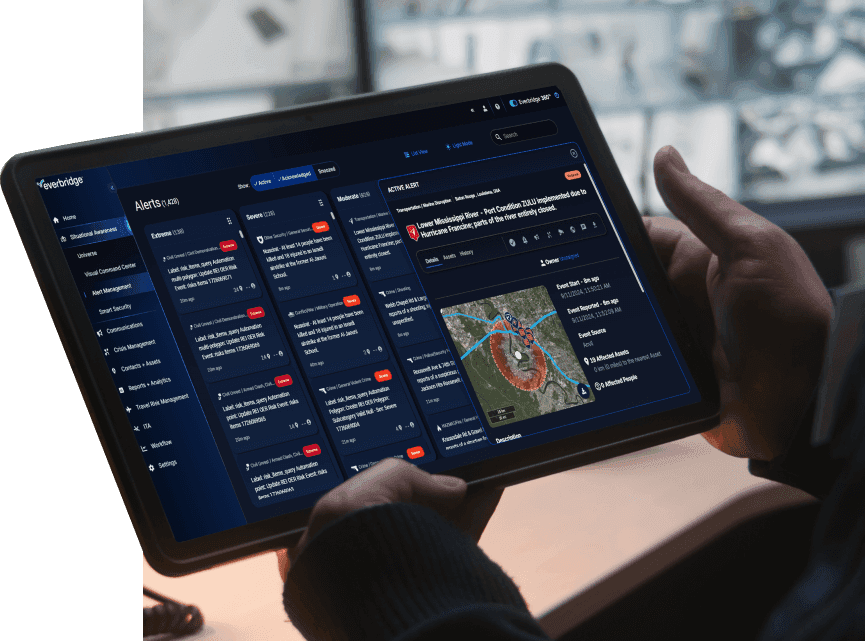Protect your global workforce with Everbridge Assist. This comprehensive service provides 24/7 medical, security, and travel assistance for any event impacting your employees’ well-being. Powered by integrated technology and a global support network, we ensure rapid, expert care to maintain safety and business continuity during any disruption or emergency.
Resource page description: Protect your global workforce with Everbridge Assist’s 24/7 support, ensuring safety and continuity with integrated technology and expert global assistance.

Everbridge Signal
Available with Everbridge 360™ Enterprise, Everbridge Signal cuts through online noise to identify critical information—saving time, resources, and lives. By enhancing resilience, protecting people, and enabling informed decisions with real-time situational awareness, it ensures operational security and safeguards your organization’s reputation.
Key benefits
- Know: Stay informed with real-time monitoring and actionable intelligence for complete situational awareness.
- Respond: Receive AI-powered alerts enabling rapid, informed decisions to mitigate threats effectively.
- Improve: Enhance operational continuity by protecting people, assets, and reputation through smarter risk management.
AI-powered intelligence for business resilience and safety
Everbridge Signal is an AI-powered open-source intelligence solution that monitors global data sources, including social media and the dark web, to deliver actionable insights and early warnings. With advanced features like automated alerts, machine learning filters, and emotional analysis, Everbridge Signal ensures informed decision-making to mitigate risks and secure your organization’s safety and reputation effectively. It automatically detects and alerts to incidents and events around the world, in multiple languages, unlocking risk intelligence on a global scale.
Key features and outcomes
- AI-powered alerts and triage: Automatically detect incidents and provide early warnings with on-demand AI incident briefs (SITREPs). AI triage agents enable proactive decision-making to mitigate threats before they escalate.
- Global monitoring: Leverage AI to uncover threats in real time across mainstream and hard-to-reach platforms—including social media, messaging apps like Telegram and Discord, forums, blogs, and the dark web—for unparalleled risk intelligence and proactive situational awareness.
- Machine learning filters: Eliminate irrelevant data using proprietary algorithms, allowing you to focus on actionable insights and critical information.
- Natural language emotion analysis: Understand emotional tone in online content for deeper context, empowering smarter decisions regarding potential risks.
- Customizable dashboards: Visualize data with geo-location mapping and sources, simplifying complex information into actionable steps for stakeholders.
- Executive protection, elevated: Leverage Generative and Agentic AI to analyze, categorize, and generate real-time alerts—delivering proactive, precision-driven security for your most high-profile individuals.
- Investigations: Research and analyze potential active threats through proven intelligence-gathering methodologies.
These features and the integration with CEM, drive crucial outcomes such as faster response times, enhanced resilience, and improved protection for people, assets, and reputation. With Everbridge Signal, gain the clarity and control needed to operate securely in an evolving threat landscape.
What makes Everbridge Signal different?
- AI-powered global intelligence: Combines AI with worldwide monitoring to detect risks in real time.
- Machine learning relevance: Filters out noise, delivering only actionable insights.
- Emotion analysis: Unlocks deeper understanding of content sentiment.
- Regulatory compliance: Utilizes only publicly available data, ensuring ethical and secure operations.
Full video transcript
0:05
In today’s complex risk landscape, true resilience takes more than static plans. BC in the Cloud has a purpose-built resilience platform that brings together everything you need. Business continuity, disaster recovery, risk management, testing, and incident response in one streamlined solution.
0:25
With powerful dependency mapping, you can visualize how systems, processes, locations, and vendors are connected, so you know exactly what’s at risk and where to act first. Need flexibility? Our platform is easily configurable with no developers required. Whether you’re adjusting workflows, updating
0:43
assessments, or customizing dashboards, you stay in control as your program evolves. And with seamless integration into Everbridge’s critical event management platform, you can instantly know what’s impacted, communicate across teams, and coordinate response when
0:57
every second counts. We meet you where you are. Whether you’re just starting your continuity journey or scaling a mature program, we help you fast track your success. Our team works alongside you to build, strengthen, and evolve your program. Because your success is our success. Land smarter, recover57sAdd a noteJump to
1:14
faster. Protect what matters most with BC in the cloud.

